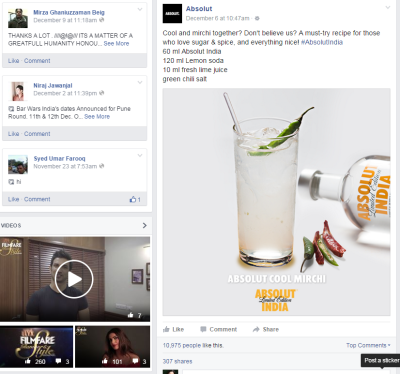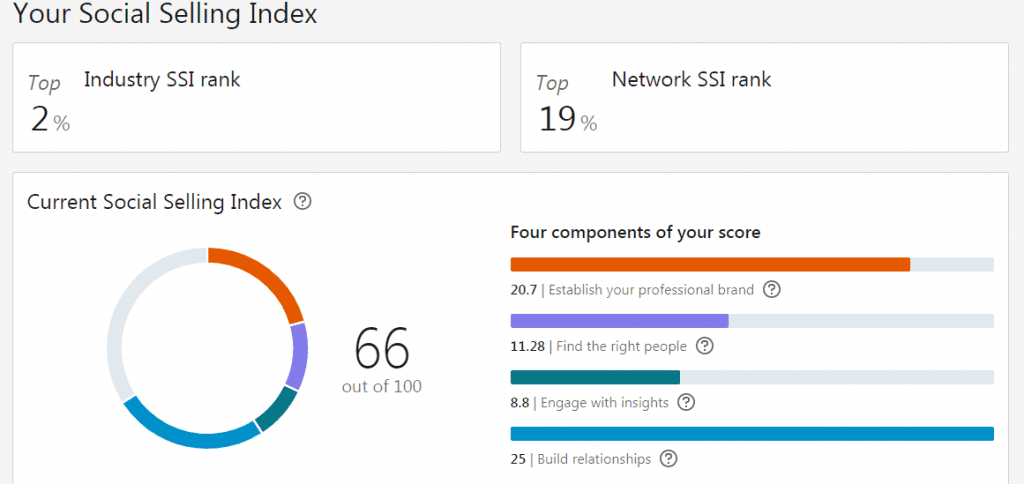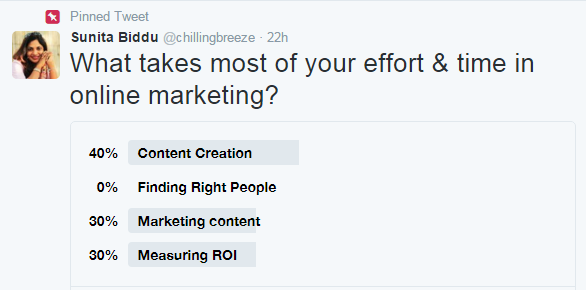The term “social selling” has gained some serious popularity in recent years. Still, only a few professionals understand how to build competent social selling strategies that lead to customer engagement and sales conversion on social media and what it takes to implement it.
To simply define social selling,
“it’s about using your personal or business brand strengths to get your social connects turn into prospects and paying customers.” A great social selling technique may involve both online and offline networks to develop and nurture relationships that would later turn into sales opportunities and business collaborations. The way consumers are relying upon social media to make their buying decisions, networks like facebook, twitter and Linkedin are making an important elements of social selling.
Aberdeen Research Group found that sales representatives that take advantage of social selling are 79% more likely to reach their sales targets.
Social selling is a subtle yet effective selling methodology for coaches and leaders because the social B2B buyer is more senior, comes with a larger budget, makes purchases often, and has more control over the decision. By implementing social selling skills and strategies properly, you can cut larger deals through shorter selling cycles – and this can increase revenue up to 15%.
In fact, it was published in Forbes that 78% of sales reps who use social media sales techniques outsell their peers. Similarly, LinkedIn recently mentioned that leaders who use their social selling skills have 45% more opportunities to make sales. To maximize your success, adopt a systematic approach to leveraging LinkedIn for social selling. Measure your social selling success by tracking key metrics and analyzing the impact of your efforts.
Here are some easy-to-implement social selling tips and training tools with an action plan to get you started.
1. Be Clear About Your Social Selling Strategy
You need to be clear about what outcomes you want to achieve through your social selling approach.
Integrating sales and social media is about genuinely sharing valuable information and content. Social selling is more about encouraging the readers and making them curious to know more about you – naturally.
Social selling is more about the pull factor, not the push strategy. ~ Sunita Biddu
You are not going to get anywhere if you spam sales messages on Linkedin, Facebook, Twitter, or other networks.
You have to make use of useful content that includes relevant videos, images, news, and snippets of information to connect to and leverage your social network community for sales. Once you build your brand loyalty, you can then cash in on it and begin with the sales conversations.
The best part about social selling is – you don’t even have to start the sales conversations. Your prospects initiate these conversations with more intent to buy from you.
Weighing your available resources, time, money, and the need of your target audience will be a good starting point to an effective social selling strategy and goals.
Read a brilliant take on the difference between social media marketing & social selling by TrapIt team
2. Display the Product/Service in Action

One of the best things about using social networks is that you can show your product in action.
Whether the product is an item of daily use or the product is you serving people as a coach or consultant. Show it in action.
So many people browse through Instagram, Facebook, or other social media networks without any idea of making a purchase.
Their buying decisions are usually spontaneous – something catches their eye, they like it, and decide to make a purchase. Social media networks give you the opportunity to share a product’s image against plain white background and share an image or even a video that shows how your product works in the real life.
If you’re a coach, consultant, or an advisor using social selling skills to build your personal brand and drive sales, use your short videos or longer video guides.
Adding real people experience will make this public display even more convincing and real to favor your brand.
3. Understand Prospects & Intent through Competition Analysis
Listen to your clients and analyze what your prospects are saying about any products/service you are offering.
Monitor their social media conversations across different networks. You shouldn’t even mind identifying your competitors’ strong and weak areas and what people are talking about them. Needless to say, you must do your own brand’s SWOT analysis first.
This activity helps you identify the most liked news, top influencers in the industry, and interests of your target audience. Perform a consumer analysis to identify the platforms that have the most potential for your business and where most of your prospects hang out. Check how other companies in your space are conducting their campaigns.
This whole exercise allows you to strengthen your social selling strategy by introducing real people’s intent, addressing their objections and answering the industry concerns in your conversations and publicly shares content.
4. Prepare a FAQ and Answer it Well
Creating a thorough FAQ, so far, is one of the most profound social selling tips for leaders to consider.
By spending some time on social networks and following what your target audience is saying about your products or service, you will be able to make a list of issues they most often face.
Be sure to answer all these frequently asked questions one-by-one in a series of videos or all at once in a blog post published on your website/blog with a link in your posts. Rectifying these issues and concerns will help build a reputation and increase brand loyalty.
Not only it makes them feel easy and clear about your product and your brand but also leaves a transparent and genuine impression about your brand.
How to Use FAQ?
You can put this thorough faq on your website or blog as page. This starts to appear in search engine rankings. You can also make independent social media posts by answering one question at a time while driving the readers to this detailed FAQ.
5. Offer Incentives Based on Sharing
Encourage your past customers to share their feedback on your social media channels.
Experiential marketing is another important key element of a successful social selling technique. Happy customers are more likely to share pictures of their purchases, but you can encourage them more by offering some incentives without appearing offensive to their ego. Both past customers and potential buyers love when brands engage with them.
Make them Heroes because THEY ARE the Heroes of your and their own brand.
One simple way to get a response is to reach out to them with a special discount coupon for their network or another incentive that inspires them to make another purchase. When others notice there is an incentive for sharing, they are more likely to react. Running a social media contest, especially on Twitter or Instagram, may prove extremely beneficial for building a brand and improving the reputation that you can use to get more selling opportunities.
6. Your Linkedin Profile is Your Social Selling Card
When people research your company or products through social media or do a background check, they never forget LinkedIn.
A CEB study shows that about 57% of a purchase decision is now made before potential customers even contact a supplier. It is therefore important to complete and keep your LinkedIn profile active and updated to ensure it leaves a positive impact on your target audience and inspires them to engage with you for more information.
Once you have updated your profile, be sure to make use of LinkedIn’s cool communication and engagement tools – you create relationships using InMails, make them more personal with a personalized welcome message or by sending a personal connection request with a reason stated.
Linkedin has a social selling index algorithm and it even let you see your Linkedin SSI score. This score gives you an idea of your profile potential and how well you can sell and how good is your network.
How to check your Linkedin social selling index score?
You can login to your Linkedin account and click this ssi checker link on sales navigator. You can see your score.

What is a good Linkedin social selling index score?
LinkedIn claims that those who achieve 70 or higher, see 45% more opportunities and are 51% more likely to hit sales targets. I see my current score down to 66 from 83 (6 months ago) with my once-a-week activity on Linkedin currently. The more active you’re, the higher is your score.
How to Improve Linkedin Social Selling Index Score
One of the best and most profound social selling skills is communication with your audience and connection, existing customers and prospects alike. The more you communicate, show up on people’s posts, comment, respond to personal messages and send personal messages, the higher your Linkedin SSI score goes.
Follow these social selling tips:
- Comment on 5-6 new and relevant posts from your non-connections. You can use Linkedin search option to find new posts in your industry. This activity expands your profile potential and visibility to non-network connections.
- Comment on 5-6 posts coming from connections and networks. Make sure you use tag the user when you respond and comment.
- Send a personal message stating a reason why you’re connecting to someone and how you found them when you send a connection request. You’ll be surprised to see where it takes you conversation and how it improves your Linkedin SSI score.
- Every time you get a connection request from someone, take time to review their profile and send a welcome message sharing what you liked in their profile or if you’re curious about anything.
- Consider making a post on your timeline a minimum once a week. If you can manage to post more frequently, that’s even better.
- Be generous in inviting people with a tag on great posts you find. Be generous in recommending people by tagging them if you see great opportunity for someone.
These social selling tips not improve your Linkedin social selling index score but also dramatically enhance your social selling skills over time with practice.
Recommended reads on
Cool Linkedin Infographic and How to Optimize Your Linkedin Profile for Social Selling
7. Take Part in Twitter Chats on Industry Topics
If you love Twitter and have an active presence, participation in Twitter chats will help you drive massive traffic and visibility from your social selling campaign.
By engaging in social listening for sales, you create a subtle recall value and establish genuine connections without aggressive selling.
This further helps because comments and likes on posts help build a knowledge base of ideas and topics you can use to create engaging content in the form of images, videos, and articles at a later stage. This analysis can even help you understand why some people post more on certain topics and what makes some posts/comments get more likes.
With knowledge about this, you will be able to participate in Twitter chats with more authority because you would know what you should talk about and what to avoid. When on Twitter, be sure to leverage interesting tools, such as TweetAdder, which helps you find new people and ManageFlitter, which helps keep your account free of the dead weight.
Use Twitter Polls to make your target audience think & remind of the challenges they even might not know. #socialselling #sunitabiddu
Recommeded PPT on social selling with Twitter
8. Help Others with Social Sharing and Selling
Building relationships on social media goes beyond mere participation in chats and discussions. Expanding your reach and strengthening relationships through relationship-based selling is crucial in helping others and fostering social sharing.
Never underestimate the power of extended networks. Their smart use can amplify your social selling. #sunitabiddu
Look for other businesses who may be related to your industry and share their interesting posts. Offer help and be willing to go to an extra mile to be of value to them. On Twitter, look for influencers and favorite their posts. Sharing good thoughts and relevant opinions, retweets will also help establish you as an active person on social networks and help you raise awareness about your own brand in the process. This strategy of influencer marketing for leaders can greatly enhance your online presence and credibility.
Be interested to get interest from others. That’s the key to getting “social” & do the selling.
9. Combine social media prospecting with other activities & nonprofit activity
While running a planned social selling campaign definitely has its advantages, you should not take it as a core direct sales channel.
Your blog, site, Facebook page, YouTube channel, Twitter profile, Blab conversations, Instagram page, Pinterest boards, and Periscope sessions all create opportunities to delight, inspire, entertain, connect, and inform your audience. Just be sure to do it right and establish your authority first to generate revenue and sales for your brand, products, and service. Any doubts? Don’t take chances; seek help of a professional or social media socach or consultant to use social selling in your current content marketing plan for sales.
Remember that social selling is selling later and getting social first.
How is social selling working for you? is there a way I can be of help. Please feel free to ask.
You can check this personal branding and business coaching and social media training services tailored to enhance sales enablement through social media. Let’s discuss and make it work for you.

Sunita Biddu is a digital business coach and power blogging mentor helping coaches and small business owners. She helps with building a strong and profitable online presence and reputation that creates a self-sustaining business. Sunita writes on this blog once a week about easy-to-use guides and articles about business, coaching, social media and blogging. You can grab some of her free resources and ebooks from the resources section.



You are simply simple and impactful as well always, Sunita.
Thank you, Rakesh 🙂
Very informative thanks